#Solar System Design Engineering
Explore tagged Tumblr posts
Text
Solar System Design Engineering and Custom Renewable Energy Solutions
Unlock the full potential of solar energy with PurePower’s expert Solar System Design Engineering services. Our team of engineers and renewable energy specialists delivers precision-engineered solar solutions tailored to your unique energy needs, location, and sustainability goals. Whether for residential, commercial, or industrial applications, we combine cutting-edge technology, advanced simulations, and industry-leading expertise to design systems that maximize efficiency, optimize energy output, and reduce long-term costs.
0 notes
Text
terra invictas spaceship mechanics are so fucking stupid
#i wish i could just import designs from CDE#those aliens would be out the the solar system by 2035#i should figure out how to mod ti so i can rebalance the engines
0 notes
Text
Optimize Your Projects with Outsourced CAD Drafting Services, CAD Design Expertise, and Solar Panel System Design
Today, the need for efficiency and cost-cutting is prevalent within the AEC sector due to the competitive nature of their business. Outsourcing CAD drafting services, employing professional CAD design services, and investing in accurate solar panel system design are all well-established approaches to be able to achieve the desired objectives.
It not only saves operational costs but also delivers high-quality outputs meeting specific project requirements.
Why Outsource CAD Drafting Services?
Outsourcing CAD drafting services seems like a game-changer for a company that wants to focus on core operations while still taking pride in top-notch deliverables. Outsourcing the work of CAD drafting is possible to experienced professionals, who will gain access to specialized expertise without overhead costs from in-house teams.
Benefits of outsourcing CAD drafting services include:
Cost Savings-Reduce infrastructure, software, and training expenses.
Access to Expertise-Work with very skilled drafters who are proficient in the latest tools.
Faster Turnaround: Meets project deadlines without lowering quality.
Scalability: Scale up to meet project needs without the requirement of growing your employee base.
From detailed architectural plans to mechanical drawings, CAD drafting services outsourcing guarantees precision and professionalism for any-sized projects.
Streamline Projects with CAD Design Services
CAD design services involve more than just drafting to achieve comprehensive design solutions that bring ideas to life. Using advanced software and technical know-how, CAD design experts help to visualize and hone those ideas, so every detail falls into alignment with project goals.
Some of the key benefits of CAD design services are:
Erected Detailed Visualizations enables viewing designs in a realistic format before production starts. Digital designs allow error minimization, ensuring a seamless transition from concept to execution. Additionally, sharing designs with stakeholders becomes easy.
Solar Power System Design
As the world moves toward renewable energy, efficient solar panel system design is essential for maximizing energy output and cost savings. Whether for residential, commercial, or industrial applications, a well-designed solar system ensures optimal performance and long-term benefits.
Key considerations in solar panel system design include:
Site Analysis: Assessing factors like location, shading, and roof orientation for maximum sunlight exposure.
Load Calculation: Determining energy requirements to size the system accurately.
Component Selection: Panels, inverters, mounting structures: choosing for efficiency and durability
Regulatory Compliance: Designs according to local codes and standards.
Consulting professionals in solar panel system design, you can develop a sustainable energy solution that reduces your carbon footprint and lowers your energy bills, increasing the value of your property.
The Power of Integration: CAD Drafting, Design, and Solar Solutions
Including outsourced CAD drafting services, CAD design expertise, and solar panel system design provides a streamlined approach towards the execution of the project. Outsourcing allows saving on both design and operational costs.
A solar installation company can outsource CAD drafting for layout plans, utilize CAD design services for the detailing of structural components, and finalize designs for solar systems that optimize energy efficiency.
Achieving unmatched levels of efficiency and innovation through outsourcing CAD drafting services, professional CAD design services, and investment in a professional solar panel system design stands at the top. Not only does this save costs, but it also ensures precision and sustainability in every project.
#Solar Panel System Design#CAD design services#CAD Drafting Services#"millwork shop drawing#3d cad company#drafting companies#drafting and design engineering#Revit MEP Drafting Services#bim outsourcing services#land development services#landscape design services
0 notes
Text
So Venus is my favorite planet in the solar system - everything about it is just so weird.
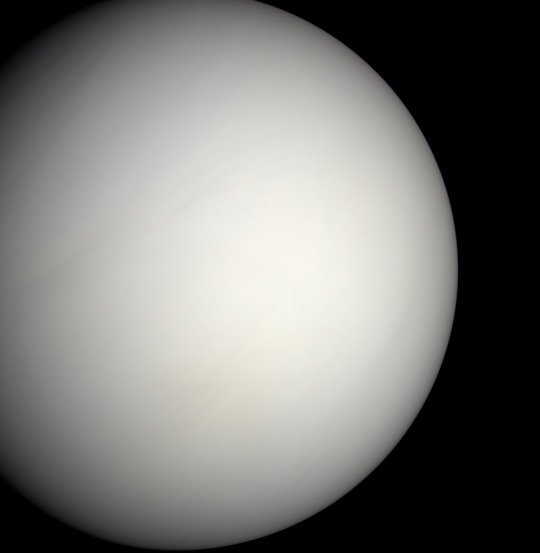
It has this extraordinarily dense atmosphere that by all accounts shouldn't exist - Venus is close enough to the sun (and therefore hot enough) that the atmosphere should have literally evaporated away, just like Mercury's. We think Earth manages to keep its atmosphere by virtue of our magnetic field, but Venus doesn't even have that going for it. While Venus is probably volcanically active, it definitely doesn't have an internal magnetic dynamo, so whatever form of volcanism it has going on is very different from ours. And, it spins backwards! For some reason!!
But, for as many mysteries as Venus has, the United States really hasn't spent much time investigating it. The Soviet Union, on the other hand, sent no less than 16 probes to Venus between 1961 and 1984 as part of the Venera program - most of them looked like this!
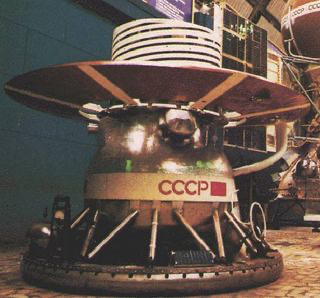
The Soviet Union had a very different approach to space than the United States. NASA missions are typically extremely risk averse, and the spacecraft we launch are generally very expensive one-offs that have only one chance to succeed or fail.
It's lead to some really amazing science, but to put it into perspective, the Mars Opportunity rover only had to survive on Mars for 90 days for the mission to be declared a complete success. That thing lasted 15 years. I love the Opportunity rover as much as any self-respecting NASA engineer, but how much extra time and money did we spend that we didn't technically "need" to for it to last 60x longer than required?
Anyway, all to say, the Soviet Union took a more incremental approach, where failures were far less devastating. The Venera 9 through 14 probes were designed to land on the surface of Venus, and survive long enough to take a picture with two cameras - not an easy task, but a fairly straightforward goal compared to NASA standards. They had…mixed results.
Venera 9 managed to take a picture with one camera, but the other one's lens cap didn't deploy.
Venera 10 also managed to take a picture with one camera, but again the other lens cap didn't deploy.
Venera 11 took no pictures - neither lens cap deployed this time.
Venera 12 also took no pictures - because again, neither lens cap deployed.
Lotta problems with lens caps.
For Venera 13 and 14, in addition to the cameras they sent a device to sample the Venusian "soil". Upon landing, the arm was supposed to swing down and analyze the surface it touched - it was a simple mechanism that couldn't be re-deployed or adjusted after the first go.
This time, both lens caps FINALLY ejected perfectly, and we were treated to these marvelous, eerie pictures of the Venus landscape:

However, when the Venera 14 soil sampler arm deployed, instead of sampling the Venus surface, it managed to swing down and land perfectly on….an ejected lens cap.
#space#space history#venus#NASA#Venera#spost#I will talk all day about venus#ask me about venus floating sky cities#unpopular opinion venus > mars#this is probably my favorite space history story#the surface of venus is made of lens caps#don't try to tell me the universe doesn't have a sense of humor#well#I guess its more that people have a sense of humor and we happen to live in the universe
29K notes
·
View notes
Text

Have a Happy Halloween with NASA
Attention ghouls and goblins of the galaxy! The season for scares and frights is upon us, so we’ve rounded up a few Halloween resources to capture that festive feeling. Read on for craft ideas, free decoration downloads, a creepy soundtrack, and even costume ideas.

Overdid it at the pumpkin patch this year? Get some creative inspiration and some pumpkin-building tips from our Jet Propulsion Laboratory engineers, carve a James Webb Space Pumpkin, or paint a pumpkin with space and weather themed designs. And yes – you can make a NASA pumpkin, too.
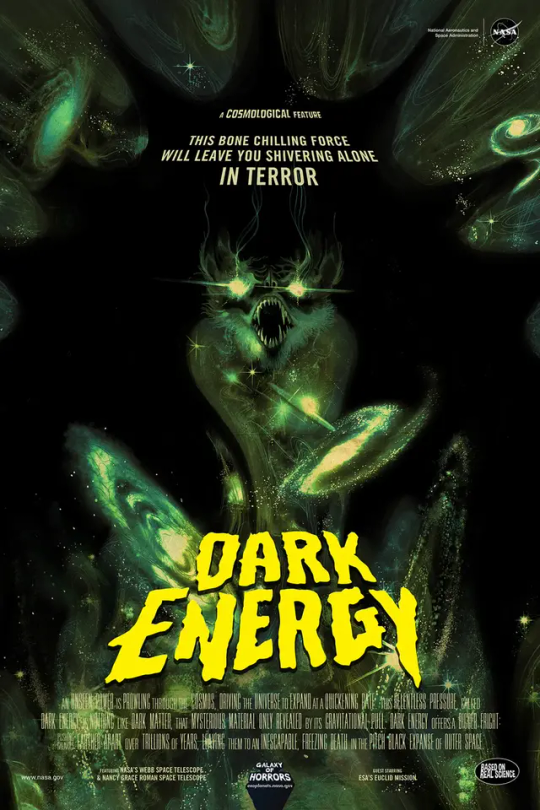
Speaking of design, check out our terrifying Galaxy of Horrors posters: decorate your walls with a an illustration of a galactic graveyard or of dark energy prowling through the universe…
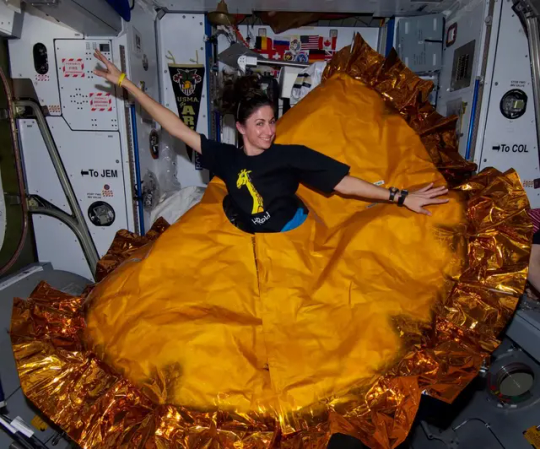
If costumes are more your thing, see how the astronauts aboard the International Space Station have dressed up over the years.
Finally, our Sinister Sounds of the Solar System playlist will give you just the right soundtrack for a haunted house or a party – or for scaring yourself all alone.
2K notes
·
View notes
Text
The Best News of Last Week
1. ‘We are just getting started’: the plastic-eating bacteria that could change the world
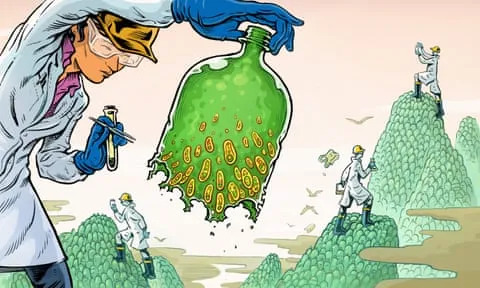
In 2016, Japanese scientists Oda and Hiraga published their discovery of Ideonella sakaiensis, a bacterium capable of breaking down PET plastic into basic nutrients. This finding marked a shift in microbiology's perception, recognizing the potential of microbes to solve pressing environmental issues.
France's Carbios has successfully applied bacterial enzyme technology to recycle PET plastic waste into new plastic products, aligning with the French government's goal of fully recycling plastic packaging by 2025.
2. HIV cases in Amsterdam drop to almost zero after PrEP scheme

According to Dutch AIDS Fund, there were only nine new cases of the virus in Amsterdam in 2022, down from 66 people diagnosed in 2021. The organisation claimed that 128 people were diagnosed with HIV in Amsterdam in 2019, and since 2010, the number of new infections in the Dutch capital has fallen by 95 per cent.
3. Cheap and drinkable water from desalination is finally a reality
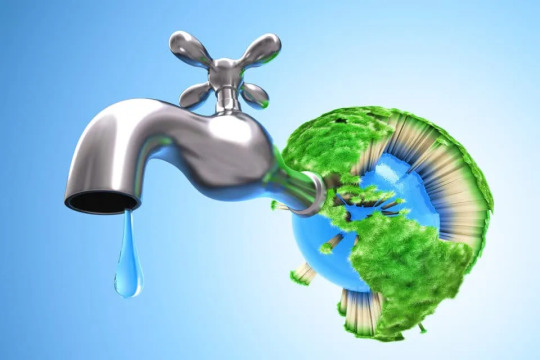
In a groundbreaking endeavor, engineers from MIT and China have designed a passive solar desalination system aimed at converting seawater into drinkable water.
The concept, articulated in a study published in the journal Joule, harnesses the dual powers of the sun and the inherent properties of seawater, emulating the ocean’s “thermohaline” circulation on a smaller scale, to evaporate water and leave salt behind.
4. World’s 1st drug to regrow teeth enters clinical trials

The ability to regrow your own teeth could be just around the corner. A team of scientists, led by a Japanese pharmaceutical startup, are getting set to start human trials on a new drug that has successfully grown new teeth in animal test subjects.
Toregem Biopharma is slated to begin clinical trials in July of next year after it succeeded growing new teeth in mice five years ago, the Japan Times reports.
5. After Decades of Pressure, US Drugmaker J&J Gives Up Patent on Life-Saving TB Drug
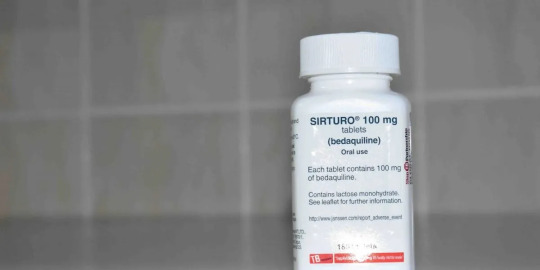
In what can be termed a huge development for drug-resistant TB (DR-TB) patients across large parts of the world, bedaquiline maker Johnson and Johnson said on September 30 (Saturday) that it would drop its patent over the drug in 134 low- and middle-income countries (LMICs).
6. Stranded dolphins rescued from shallow river in Massachusetts
youtube
7. ‘Staggering’ green growth gives hope for 1.5C, says global energy chief

The prospects of the world staying within the 1.5C limit on global heating have brightened owing to the “staggering” growth of renewable energy and green investment in the past two years, the chief of the world’s energy watchdog has said.
Fatih Birol, the executive director of the International Energy Agency, and the world’s foremost energy economist, said much more needed to be done but that the rapid uptake of solar power and electric vehicles were encouraging.
---
That's it for this week :)
This newsletter will always be free. If you liked this post you can support me with a small kofi donation here:
Buy me a coffee ❤️
Also don’t forget to reblog this post with your friends.
11K notes
·
View notes
Text
Unlocking Solar Design Secrets: How a Cutting-Edge Tool Paves the Way to Sustainable Energy
💪 Boost your productivity with features specifically tailored to mounting system manufacturers. Seamlessly calculate the ideal dimensions, loads, and angles for your solar panel arrays. 📐✔️
⚡️ Unleash your creativity and choose from a wide range of customizable components, ensuring the perfect fit for each unique project. 🧩🎨
📊🌞 From residential rooftops to large-scale commercial installations, our calculator has got you covered, allowing you to effortlessly visualize the most efficient configurations and maximize energy output. 🏢🏡🔆
🌟 Join the ranks of industry leaders who rely on our state-of-the-art technology to reduce costs, enhance performance, and deliver impeccable results! 🏆✨
🔗 Visit our website to learn more about our customized calculator for mounting system manufacturers and revolutionize your solar PV designs today! 💻🔗
#SolarPVDesign #CleanEnergySolutions #InnovationAtItsFinest
#solar design tool#solar design software#solar energy#pv design software#solar engineering#solar design#solar system layout
0 notes
Text
How to find the potential DATES of when you'll meet your future spouse OR new romantic partner
VEDIC ASTROLOGY METHOD
This method will give you the potential dates of one or all of the following:
When you'll discover your future spouse/new partner.
When you'll meet your future spouse/new partner.
When you'll begin a relationship with your future spouse/new partner.
When you'll have sex with your future spouse/new partner for the first time.
This method ONLY works for the years when you have indicators that a new romantic relationship will enter your life via the:
Venus return chart
Mars return chart
Solar return chart
Dasha period that is favorable for a new romantic relationship
You must use your sidereal natal chart for this method. I've tested this method for accuracy and it ONLY works with the sidereal natal chart. It does NOT work with the tropical natal chart.
The first thing you need to do is locate which house in your sidereal natal chart will be your Annual Profection House for the year you have indicators of entering a new romantic relationship.
For example: Let's say you have indicators that you'll enter a new romantic relationship in 2025 and on your birthday in 2025 you will turn 25. According to the tropical astrology Annual Profection Wheel, when you turn 25 you enter a 2nd House Profection Year.

There is also a Vedic astrology Annual Profection Wheel, but the ages for each house are different. According to this chart, when you turn 25 you enter a 1st House Profection Year.
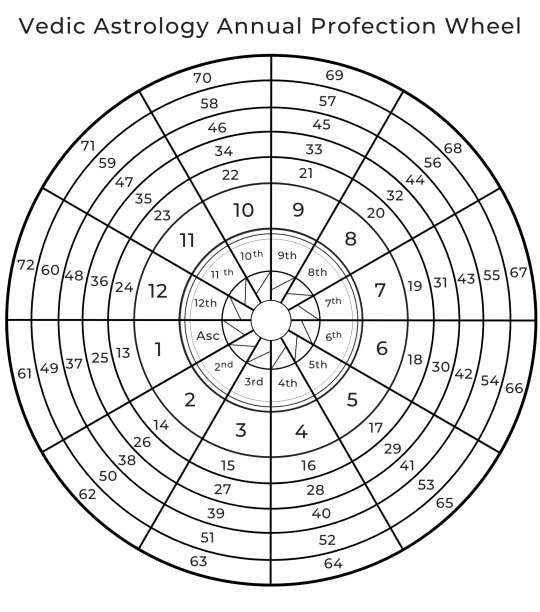
You're going to do the following FOR BOTH Profection Houses (in this example: the 1st & 2nd house). Find the following in your sidereal natal chart:
Identify the lord of the Profection House.
Find what house that lord is in.
Identify the lord of the house that the Profection House lord is in.
For example: The 1st house is the Profection House. •The 1st house lord is Sun. •Sun is in the 6th house. •The 6th house lord is Saturn.
Whenever Mars, Venus, Jupiter or Rahu makes a trine aspect to your natal Sun (Profection House lord) & natal Saturn (lord of house the Profection House lord is in) = is the date when you will potentially meet your future spouse/new romantic partner.
You're going to use the Sidereal Natal Transits Online Search Engine on Astro Seek.

After entering your information, you're going to:
Select (one at a time) Mars/Venus/Jupiter/Rahu under Transit.
Select Trine under Aspect.
Select the lord of your Profection House under To Natal.
Select the year you have indicators of a new romantic relationship entering your life under From.
Select Whole Sign under House System.
Leave the selection on Lahiri under Sidereal Ayanamsa.
Click Calculate.
You'll then see the following screen:

Whatever dates that show up in the list that fall within your birthday year will have the potential for you meeting your future spouse/new romantic partner. The birthday year starts on the date of your birthday and ends on the day of your next birthday.
You're going to repeat this search SEVERAL times because you need to search for when transiting Mars, Venus, Jupiter AND Rahu will trine the natal lord of your Profection House.
THEN you'll do this process all over again by changing the natal planet to the lord of the house your Profection House lord is in.
BUT WAIT, WE'RE NOT DONE YET.
You need to do this entire process AGAIN for the Profection House lord according to the tropical astrology Annual Profection House Wheel.
The reason why you should use this method with both the tropical astrology AND Vedic astrology designated Profection House:
Because BOTH will give you at least one accurate date.
When I used this method on my sidereal natal chart for the year I entered a serious romantic relationship, the results from using the tropical astrology Profection House lord gave me THE DATE when I began talking to that partner. The results from using the Vedic astrology Profection House lord gave me THE DATE we had sex for the first time. So it's in your best interest to use both because one of the dates you get is bound to be correct.
If you find this too confusing but want to know the dates of when you'll potentially meet your future spouse AND new romantic partners, DM me for a reading!
I'm now including this method in my $25USD New Relationship Timing reading. In this reading I give you the approximate years AND dates of when you'll meet a new romantic partner and enter a relationship with them. This reading covers the next 20 years.
I'm also including this method in my $25USD Future Spouse reading as an add-on for an additional $15USD.

226 notes
·
View notes
Text
Dandelion News - February 8-14
(I’m finally starting to get better from having had pneumonia for 2+ weeks, hopefully next week’s news should be on time)
Like these weekly compilations? Tip me at $kaybarr1735 or check out my Dandelion Doodles!
1. Solar-powered device captures carbon dioxide from air to make sustainable fuel

“[The] solar-powered reactor could be used to make fuel to power cars and planes[.… It] does not require fossil-fuel-based power, or the transport and storage of carbon dioxide, but instead converts atmospheric CO2 into something useful using sunlight.”
2. How artificial light can boost coral reef recovery

“UZELA is [an autonomous submersible] designed to attract zooplankton […] by emitting specific wavelengths of light. [… In a ”six-month testing period,” it] significantly increased local zooplankton density and boosted the feeding rates of both healthy and bleached coral.”
3. Next-gen solar cells now fully recyclable with water-based method

“The recycled solar cell has the same efficiency as the original one. The solar cell is made of perovskite and the main solvent is water. […] They are not only relatively inexpensive and easy to manufacture but also lightweight, flexible and transparent.”
4. Green walls cool cities and create urban habitats

“The researchers measured a cooling effect of up to 0.6–0.7 degrees Celsius [… which] could help combat the urban heat island phenomenon. […] The researchers [also] found that plant-covered facades hosted over 100 animal species, including insects, spiders, and birds.”
5. Major cause of honeybee mortality can be easily reduced

“If treatment occurs too soon, it may not fully eliminate the mites, allowing them to rebound before the season ends. […] Similar to antibiotic-resistant bacteria, mites that survive mistimed or improperly applied treatments become more resistant to future applications.”
6. Uganda community group restores shea groves and livelihoods

“As part of a larger effort to restore Uganda’s shea parklands, the cooperative has successfully rehabilitated more than 500 hectares (1,240 acres) of degraded land, integrating shea trees (Vitellaria paradoxa) and other native species with maize and sunflower crops.”
7. Senate Renews Commitment to the Great Lakes

“The [Act] represents the most significant federal investment in the health of the Great Lakes, addressing critical challenges such as pollution, invasive species, and habitat restoration. The Great Lakes […] hold 20 percent of the world’s surface freshwater[….]”
8. Earth Gets Its Largest Protected Tropical Forest Reserve

“The Kivu-Kinshasa Green Corridor will […] protect 108,000 square kilometres of primary forest and support 60 million people who depend on the forest for food, energy and jobs. […] Through this approach, the DRC is empowering local communities to protect the forest while fostering economic growth.”
9. Australia’s Rarest Bird of Prey Spotted in Central Australia After 30 Years

“Dr. Henderson’s finding is an encouraging sign of the health of the sanctuary’s ecosystems as well as the bird’s continued migration into new areas. This bird’s presence in the sanctuary is particularly significant as it is the first confirmed sighting in the region since the mid-1990s.”
10. Australian company wins contract to design “hydrogen ready” high speed ferry

“The ferry, the Horizon X, will have capacity for 1,650 passengers and 450 cars, and will be able to travel at a speed of up to 35 knots. […] The ship will also have a specially-designed propulsion system arrangement that repurposes exhaust from the engine to help propel the vessel, in theory reducing its emissions.”
February 1-7 news here | (all credit for images and written material can be found at the source linked; I don’t claim credit for anything but curating.)
#hopepunk#good news#solar power#sustainability#carbon capture#technology#coral reef#ocean#solar panels#solar energy#recycling#green infrastructure#urban heat#urban#biodiversity#honey bees#beekeeping#africa#farming#great lakes#us politics#conservation#nature#australia#birds#endangered species#transportation#ferry#boat#energy efficiency
100 notes
·
View notes
Text

I cannot believe it's taken me this long to post him here but—here is my Owlk OC, Eris!
Eris lives on the home moon, in the largest of the villages in the lowlands. With passions for both astronomy and mathematics, the decision to become an aerospace engineer was an easy one for him, and he thrives on designing satellites and spaceships to further the Owlks' understanding of their solar system. With a philosophy of "functional beauty", he's always sure to add a bit of artistic flair to all of his designs, often being inspired by nature while out hiking with his outdoorsy partner, Sedska ( @eruraima's OC ).
He is friendly, genuine, and very talkative, often starting conversations with strangers when out and about in the market. He has tastes for the finer things in life, taking great care in his appearance and buying carefully crafted jewellery and clothes, though he also gains a deep appreciation for the natural world after meeting Sedska.
When the Eye of the Universe is found and the Owlks decide to pursue its signal, Eris is tasked with solving the Interstellar Propulsion Problem—how to create an energy efficient propulsion system that will cover the distance between stars. He designs the solar sails that allow the journey to be possible, taking inspiration from plants, ballooning insects, and animals that use thermal updrafts when flying. Upon seeing the destruction the construction of the Stranger causes to the home moon, Eris publicly denounces the project, spending the rest of his life regretting his contribution to the uprooting of the very nature that inspired his designs.
#outer wilds#outer wilds spoilers#echoes of the eye spoilers#outer wilds oc#eris#my art#the LORE this dude has#i could write several novels
69 notes
·
View notes
Text
Mariner program
The Mariner program was conducted by the American space agency NASA to explore other planets. Between 1962 and late 1973, NASA's Jet Propulsion Laboratory (JPL) designed and built 10 robotic interplanetary probes named Mariner to explore the inner Solar System - visiting the planets Venus, Mars and Mercury for the first time, and returning to Venus and Mars for additional close observations.
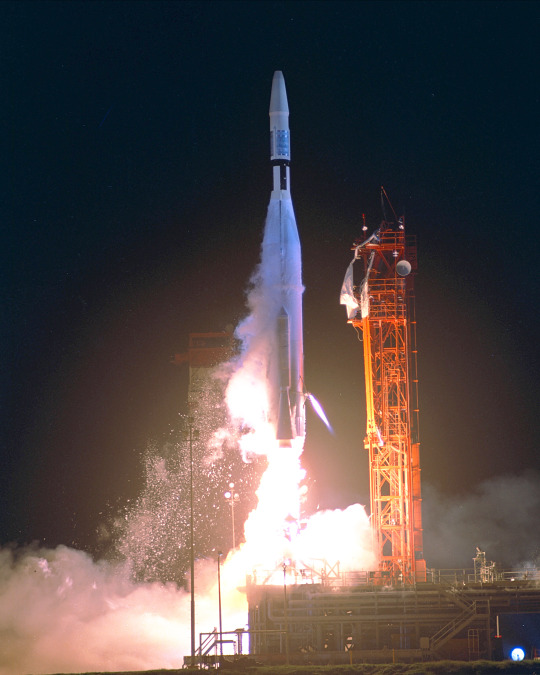
The program included a number of interplanetary firsts, including the first planetary flyby, the planetary orbiter, and the first gravity assist maneuver. Of the 10 vehicles in the Mariner series, seven were successful, forming the starting point for many subsequent NASA/JPL space probe programs.

The name of the Mariner program was decided in "May 1960-at the suggestion of Edgar M. Cortright" to have the "planetary mission probes ... patterned after nautical terms, to convey 'the impression of travel to great distances and remote lands.'" That "decision was the basis for naming Mariner, Ranger, Surveyor, and Viking probes."
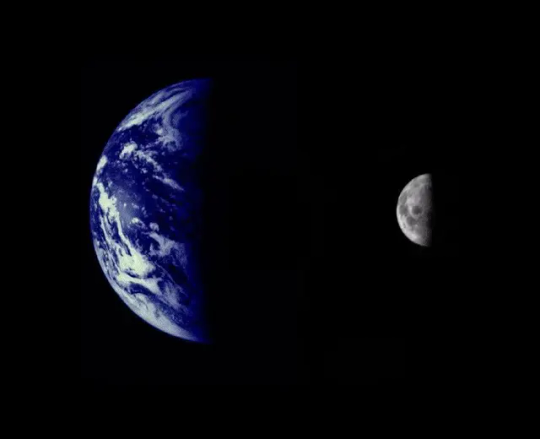
Each spacecraft was to carry solar panels that would be pointed toward the Sun and a dish antenna that would be pointed at Earth. Each would also carry a host of scientific instruments. Some of the instruments, such as cameras, would need to be pointed at the target body it was studying. Other instruments were non-directional and studied phenomena such as magnetic fields and charged particles. JPL engineers proposed to make the Mariners "three-axis-stabilized," meaning that unlike other space probes they would not spin.
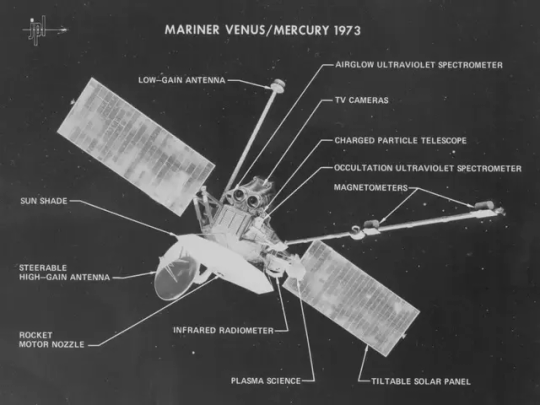
Mariner 1 and Mariner 2
Mariner 1 and Mariner 2 were two deep-space probes making up NASA's Mariner-R project. The primary goal of the project was to develop and launch two spacecraft sequentially to the near vicinity of Venus, receive communications from the spacecraft and to perform radiometric temperature measurements of the planet. A secondary objective was to make interplanetary magnetic field and/or particle measurements on the way to, and in the vicinity of, Venus.
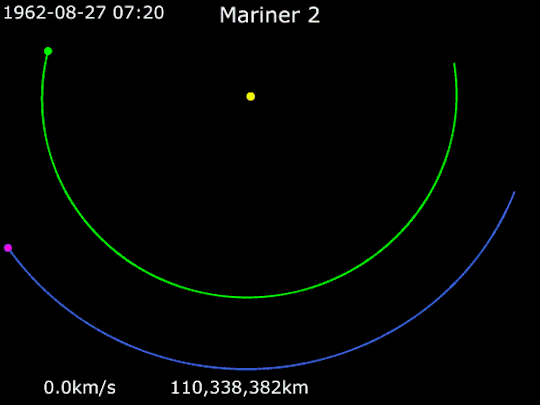
Animation of Mariner 2's trajectory from August 27, 1962, to December 31, 1962. Mariner 2 · Venus · Earth.
Mariners 3 and 4
Sisterships Mariner 3 and Mariner 4 were Mars flyby missions.
Mariner 3 was launched on November 5, 1964, but the shroud encasing the spacecraft atop its rocket failed to open properly and Mariner 3 did not get to Mars.
Mariner 4, launched on November 28, 1964, was the first successful flyby of the planet Mars and gave the first glimpse of Mars at close range
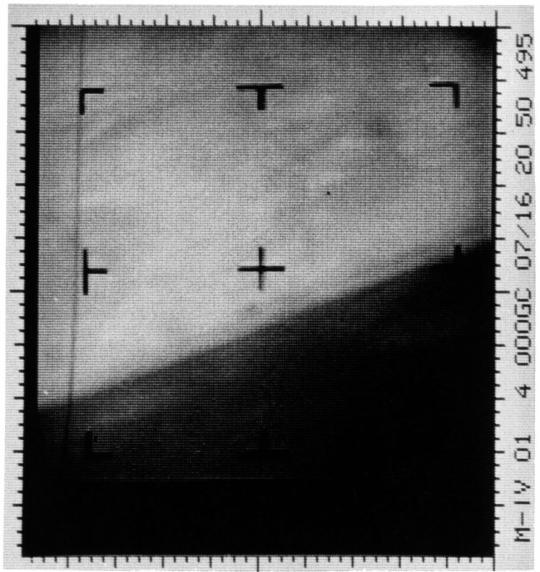
This archival image is an enhanced contrast version of the first Mars photograph released on July 15, 1965. This is man's first close-up photograph of another planet -- a photographic representation of digital data radioed from Mars by the Mariner 4 spacecraft. Data was either sent to Earth immediately for acquisition or stored on an onboard tape recorder for later transmission.
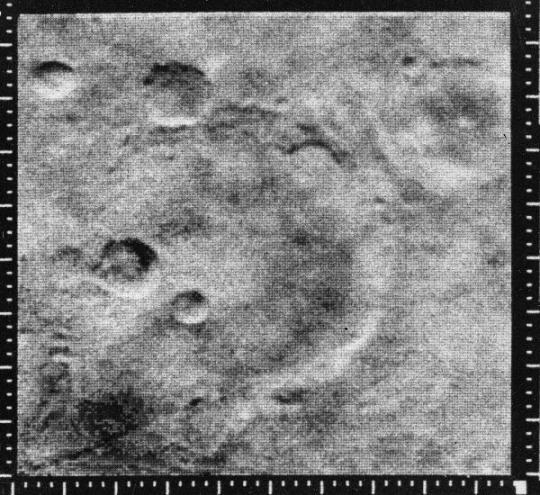
The pictures, played back from a small tape recorder over a long period, showed lunar-type impact craters (just beginning to be photographed at close range from the Moon), some of them touched with frost in the chill Martian evening.
Mariner 5

The Mariner 5 spacecraft was launched to Venus on June 14, 1967, and arrived in the vicinity of the planet in October 1967. It carried a complement of experiments to probe Venus' atmosphere with radio waves, scan its brightness in ultraviolet light, and sample the solar particles and magnetic field fluctuations above the planet.
Mariners 6 and 7
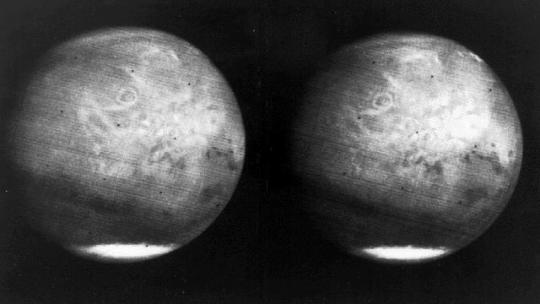
Mariners 6 and 7 were identical teammates in a two-spacecraft mission to Mars. Mariner 6 was launched on February 24, 1969, followed by Mariner 7 on March 21, 1969. They flew over the equator and southern hemisphere of the planet Mars.
Mariners 8 and 9
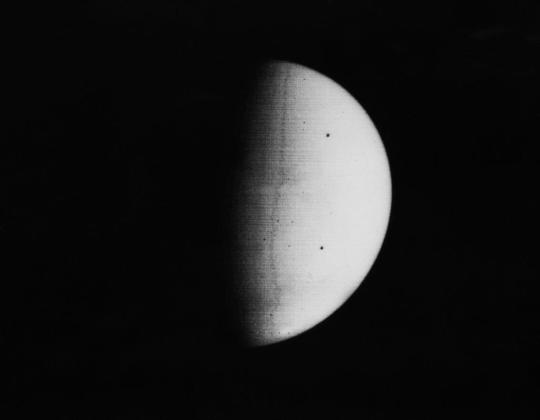
Mariner 8 and Mariner 9 were identical sister craft designed to map the Martian surface simultaneously, but Mariner 8 was lost in a launch vehicle failure. Mariner 9 was launched in May 1971 and became the first artificial satellite of Mars.
Mariner 10

The Mariner 10 spacecraft launched on November 3, 1973, and was the first to use a gravity assist trajectory, accelerating as it entered the gravitational influence of Venus, then being flung by the planet's gravity onto a slightly different course to reach Mercury. It was also the first spacecraft to encounter two planets at close range, and for 33 years the only spacecraft to photograph Mercury in closeup.
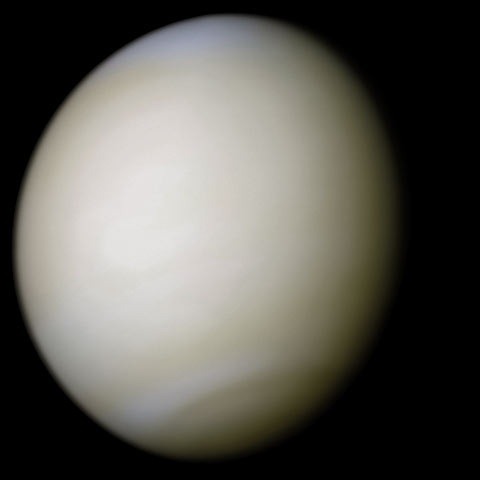
Venus in real colors, processed from clear and blue filtered Mariner 10 images
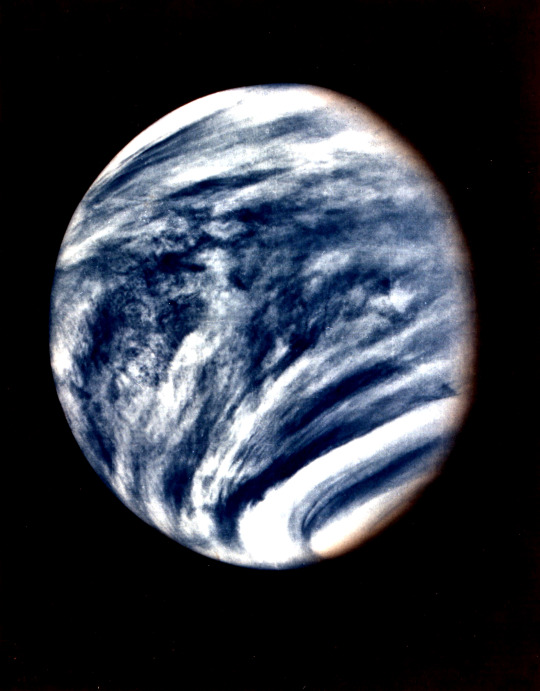
Mariner 10's photograph of Venus in ultraviolet light (photo color-enhanced to simulate Venus's natural color as the human eye would see it)
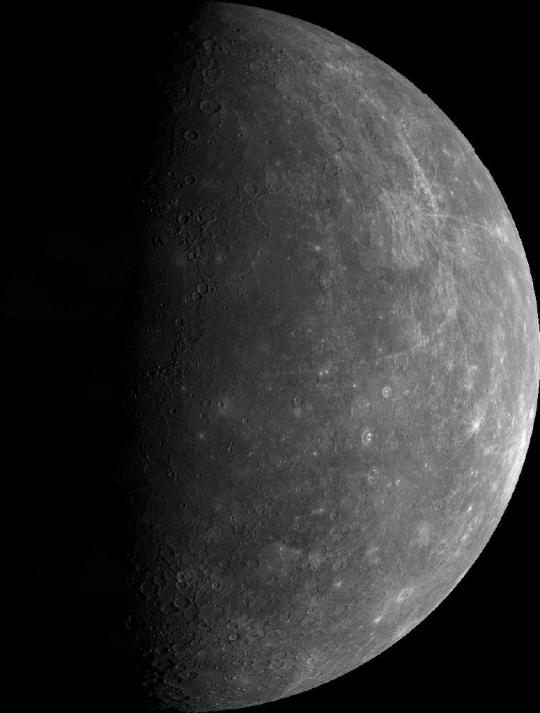
This mosaic shows the planet Mercury as seen by Mariner 10 as it sped away from the planet on March 29, 1974.
source x, x | images x
#mercurio#mercury#venus#mars#marte#astronomy#astronomia#space#solarsystem#sistemasolar#universe#universo#mariner#mission#space exploration
267 notes
·
View notes
Text
Design as the Key to Achievement in Energy Efficiency and Sustainability

Design is the key to achieving energy efficiency and sustainability in today's world. Be it domestic or commercial, industrial applications-that proper design of a solar panel system makes the difference in its capture and conversion of solar energy to usable power for the benefit of the end-user.
A well-designed solar panel system will reduce electricity bills, cut down the carbon footprint, and is a source of energy for decades. This also brings about the advantages of incorporating GIS mapping services and geotechnical engineering services to make these solar energy projects more accurate and efficient.
Why Designing a Solar Panel System Matters
Ideally, a solar panel system design produces at the maximum of any energy from sources at the lowest costs possible. The designing process generally encompasses knowledge of several factors such as the location, orientation, shading, and the amount of energy required.
The design of the solar panel system cannot be simply mounting panels on a rooftop or plot of land. Instead, it is a calculation for determining energy output for the system, along with sizing and performance efficiency. Weather patterns and local building regulations are also considered, as well as specific needs in terms of energy from the property.
Advances in Solar Panel Projects through GIS Mapping Services
With large-scale solar panel installations, great importance is placed on both planning and execution, mainly because GIS mapping services enable accurate collection, analysis, and presentation of spatial data on which determination of the best site for the installation of solar panels can be based. GIS mapping services can serve the purpose for engineers by allowing them to analyze terrain, land use, solar radiation, and other obstructions like trees or buildings that might affect the sunlight reaching the plant.
GIS is principally applied in assessing environmental impacts apart from helping abide by the local authorities' regulations. This service helps to make the design of a solar panel system much streamlined by giving the identification of layouts highly efficient for the panels. By reducing the time of installation, it minimizes the chances of expensive mistakes.
Geotechnical Engineering Services: Construction on solid foundation
Another vital component of solar energy projects is geotechnical engineering services. These services are indispensable for the analysis of soil conditions where the panels will be installed - on the rooftop or on the ground- provide pertinent information in terms of soil stability, bearing capacity, and potential hazards.
One of the prime reasons is the understanding of geotechnical conditions at the site, which facilitates a structurally safe and sound solar panel system. Poorly designed foundations or unsuitable soil conditions may become a major cause of failure of the system, costly repairs, or even worse - a catastrophic collapse.
Integration of design for a solar panel, GIS, and geotechnical expertise
The disciplines of solar panel system design, GIS mapping service, and geotechnical engineering services lead to highly efficient, reliable, and long-lasting solar energy solutions. Each aspect of the installation of solar panels is optimized for performance and safety with these disciplines together.
In the new push for sustainability, a fit and efficient design for the solar panel system is fundamental. The growing demand for renewable sources of energy will, therefore, mean that specialized services in solar projects will form the key creating energy solutions that truly last.
0 notes
Text



We always thought we were alone out there. Not in the galaxy—no, that dream died fast. I mean alone… in ourselves. Human.
Centuries ago, we broke Earth’s gravity with nothing but desperation and data. We were running—from ruin, from rot, from each other. But we didn’t stop at the stars. We colonized them, carved cities into comets, hung solar farms between moons, called it home.
But it wasn’t just our bodies that changed out here. It was our minds.
Pluto was the furthest reach—the quiet end of a dying signal. They built Eridia there: a haven for thinkers, neuralists, soul-engineers. They studied what space does to the human psyche. And they found something.
They called it "The Hunger" A psychic sickness. A rupture in the way we connect. It spread like a system glitch—slow, silent, and deep within humanity. Affection became dangerous. Touch became lethal.
So they rewrote humanity—dampeners, inhibitors, neural locks. No more empathy spikes, no more entanglement, no more touching. It worked for a while. The Hunger hasn’t gone away; it has evolved. And those who feel too much… burn out.
You shouldn’t be alive. And yet—here you are. You weren’t born with the Hunger. With your own motivations in mind, you travel to Eridia, seeking answers about the one thing only you have.
Your hopes are to The Pantheon Circuit; A religious-techno body worshipping the ancient pre-human code—fragments of consciousness scattered through the galaxy.
Chose your backstory;
✩ The Conduit
You were wired to a forgotten AI-god, left floating in the void. They asked questions no one else could hear. You gave answers the system feared. People treated you as a seer, a signal booster, a danger to system control. You escaped before they could erase you.
✩ The Drifted
They found you in a half-dead cryo-pod, memory fogged. You wore a military tag that doesn’t exist in any records. As you traveled with your saviours, someone redirected your ship, causing you to crash into a nearby moon. Every crew member, and every record of their findings died. All but you.
✩ The Vessel
Biotech-enhanced and artificially immune to “the hunger” by design. Someone tried to build a cure into you, and you killed them getting out. Your "mother" found and took you in, but she's colapsing under the Hunger, and you leave to find help
You crash-land on Pluto with a celestial train, and are discovered by a rogue AI that was smuggled into Eridia.
Chose your Love Interest;
✩ Ais
Code Shaman — repairs forbidden AIs, speaks with machines, implants psychic firewalls.
Talks about Ȩ̴̻͚̟̳̬̣̮̿̀̈́̋̑̿̀̐̅̂̈́̄ȑ̷̡̢̢̝̬͔͚͔̲̯͖̜͊͊́͛̑̔̑̓͐̄͂̅͝͝o̵͈̙̩̍̓͐͋̅̉̊̔c̸͕̖͕͛̐͂̉̏͗̀̓͑͂̽͘
✩ Leander
Sensory Dealer — runs simulated emotion dens, trades stolen memories, fakes affection until yours feels real.
✩ Kuras
Ex-Pantheon Ascendant — a spiritual anchor turned apostate, carries forbidden relics from the Core
✩ Mhin
Scavver — builds illegal augment limbs, hides in The Drift’s ghost tunnels, allergic to vulnerability.
✩ Vere
Phantom-Operative — genetically altered for silence and cruelty, works for The Pantheon Circuit
Other; The Spire & The Drift
"Up there, they breathe clean air. Down here, we survive."
✩ The Spire: A tower city scraping the dome’s edge, flooded with reflective chrome and corporate cults. Rich in synthetic light, dead in soul.
✩ The Drift: Underground, near the reactor slums. Neon gutters, rusted platforms, mod markets. People here splice their DNA for coin or survival.
#verethinks#verewrites#red spring studios#touchstarved#ts#touchstarved game#touchstarved headcanons#touchstarved oneshot#ais#ts ais#ais touchstarved#touchstarved ais#vere#ts vere#vere touchstarved#touchstarved vere#mhin#mhin headcanons#ts mhin#mhin touchstarved#touchstarved mhin#mhin oneshot#kuras#ts kuras#kuras touchstarved#touchstarved kuras#leander#ts leander#leander touchstarved#touchstarved leander
29 notes
·
View notes
Note
For your space au (which i love!)- how did you determine which planet everyone came from, and did anything from those planets help inform the aesthetic characteristics of the different trains at all?
So, actually, the base of the idea came from @discowormfan who asigned all our lovely and wonderful champion engines their planets and who came up with the little blurb of intros that are sitting above the champion engines!
I fear it started as what was just supposed to be some designs to put with their idea, but then I kind of stared at the designs and went "......... i need to do this to the whole cast now"
I'm not sure how Disco chose the initial planets, but I know my designs for the champion engines were based more off their little introductory snippets, which then became my bases for designing everyone else!
Picking planets for everyone else-- with the exception of Electra, Hydra, Slick, and the steamers-- was then mostly just vibes or lore based on what I'd already set design wise or Disco had mentioned in those little blurbs!
The steamers i picked to be from Pluto due to that giving a good reason for them to be picked on-- their planet isn't even considered a planet anymore
Hydra HAD to come from the gas giant made up almost entirely of Hydrogen
Wood and coal are a very like..... earth specific resource so Porter and Lumber were from there, and I wanted Slick to fit in w/ them at a glance but if you look closer something's not quite right, and I know there's always talk about like-- oh, colonizing mars or whatever-- so I thought that could be fun
And Electra is from Kepler 452b because they're always this cool mysterious whatever, and like...... why not make them from a cool mysterious planet from outside our solar system?
32 notes
·
View notes
Text


two new oc designs, Obliviron and X-B199
Obliviron is a Decepticon communications engineer and his alt mode is a Space Station. He works with a colleague as they travel around the solar system to fix or build ways for the Decepticons can communicate, along with preforming his own studies on new planets. He is NOT a scientist outside of his job, but he has an interest in biology and foreign ecosystems. Which leads to a lot of scientific malpractice that he sends to Shockwave or other scientists. He is ill tempered and arrogant. Obliviron often argues with his colleague because he believes the other is being useless or wastes resources. However, he is quiet for the most part and speaks only when necessary
X-B199, or XB(?), is a man-made transformer. An organization (either MECH or something similar) managed to harvest a spark, and created a frame to house it. While he is sentient, he is still confined to the programing that was forced on him. He cannot think for himself, feel for himself, act for himself. He feels so much pain just from existing, because his spark feels so suffocated in his frame. He is not human, and he is not cybertronian. He is alone.
47 notes
·
View notes
Text
In recent years, the use of solar energy has become increasingly popular. As the technology continues to evolve, the need for solar design software is more evident than ever. Understanding the key features and functionality of solar design software is essential for anyone looking to capitalize on the potential of solar energy. This blog post will provide an overview of the key features and functionality of solar design software, giving readers the knowledge they need to make informed decisions about their solar energy projects.
#solar design software#solar engineering#solar design#pv design software#solar energy#solar design tool#solar system layout
0 notes